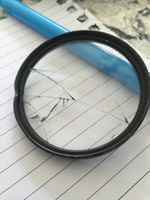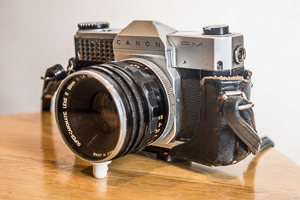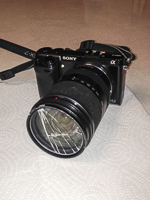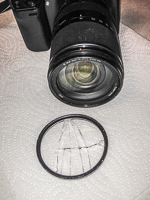Online Magazine
Recent Posts
- Safeguard your Cellphone Photos
- Black & White to Color – Instantly
- Wearing Many Hats
- Video Roundup
- Rescuing Your Blurry Pictures
- Showing Their Age
- What is Your Angle?
- Panorama Photos
- Humorous Photos
- Close Ups
- Fisheye Pictures
- Photo Antiquities
- Printing Big
- Appreciating Scale
- Celebrity Sightings
Tags
More Places to Go
- Free "How-To" Books “How To” books for popular cameras 0
- Vist Us on Facebook keep in touch with us on Facebook 2
Archives
- July 2023 (1)
- March 2023 (2)
- February 2023 (1)
- December 2022 (1)
- October 2022 (1)
- September 2022 (8)
- August 2022 (9)
- July 2022 (1)
- June 2022 (1)
- June 2021 (1)
- May 2021 (1)
- March 2021 (5)
- February 2021 (4)
- January 2021 (2)
- April 2019 (1)
- March 2019 (1)
- February 2019 (1)
- October 2018 (2)
- April 2018 (1)
- March 2018 (4)
- February 2018 (1)
- November 2017 (1)
- August 2017 (1)
- June 2017 (1)
- April 2017 (1)
- March 2017 (5)
- February 2017 (2)
- January 2017 (1)
- October 2016 (1)
- September 2016 (1)
- August 2016 (1)
- July 2016 (1)
- May 2016 (1)
- April 2016 (1)
- March 2016 (2)
- February 2016 (1)
- January 2016 (2)
- December 2015 (1)
- November 2015 (1)
- October 2015 (3)
- April 2015 (1)
- March 2015 (5)
- February 2015 (1)
- January 2015 (4)
- December 2014 (2)
- November 2014 (5)
- October 2014 (2)
- September 2014 (1)
- August 2014 (2)
- July 2014 (1)
- May 2014 (1)
- April 2014 (5)
- March 2014 (5)
- December 2013 (2)
- November 2013 (18)
- October 2013 (1)
- September 2013 (1)
- August 2013 (1)
- July 2013 (1)
- June 2013 (3)
- May 2013 (1)
- April 2013 (2)
- March 2013 (1)
- February 2013 (1)
- January 2013 (1)
- December 2012 (1)
- November 2012 (2)
- October 2012 (2)
- September 2012 (5)
- August 2012 (2)
- July 2012 (1)
- June 2012 (1)
- May 2012 (1)
- April 2012 (4)
- March 2012 (1)
- February 2012 (1)
- January 2012 (3)
- December 2011 (1)
- November 2011 (3)
- October 2011 (1)
- September 2011 (2)
- August 2011 (2)
- June 2011 (3)
- May 2011 (4)
- April 2011 (8)
- March 2011 (8)
- February 2011 (10)
- January 2011 (6)
- December 2010 (11)
- November 2010 (14)
- October 2010 (6)
- September 2010 (12)
- August 2010 (2)
- July 2010 (4)
- June 2010 (3)
- May 2010 (1)
- April 2010 (1)
- March 2010 (2)
- February 2010 (1)
- January 2010 (1)
- December 2009 (1)
- November 2009 (2)
- October 2009 (2)
- September 2009 (1)
- August 2009 (3)
- July 2009 (2)
- June 2009 (1)
- May 2009 (2)
- April 2009 (1)
- March 2009 (2)
- February 2009 (1)
- January 2009 (3)
Lens Settings and the Background
26th June 2022
How Size Matters
When picturetaking, most often I’m concerned about the subject that is closest to me. I’ll pick the length of the lens that emphasizes the subject.
But there are often times that I’ll want the subject to fit in nicely with the background. By using a zoom lens, I can compose the subject in the viewfinder by varying the lens length setting.
While taking these photographs, I stood in the same place at the same distance from the foreground subject. I changed only the length of the lens (using a 24 to 240mm zoom lens).
As I’m not verbally astute enough to give you a proper explanation, I’ll show you visually how changing the lens length interacts with the perspective of the background.
My favorite is the last photo taken with the longest lens setting which emphasizes the mountains in the background.
For those that are interested, the foreground subject is the Moulton barn along Mormon Row in Grand Teton National Park. The background are some of the iconic mountains of the Teton Range.
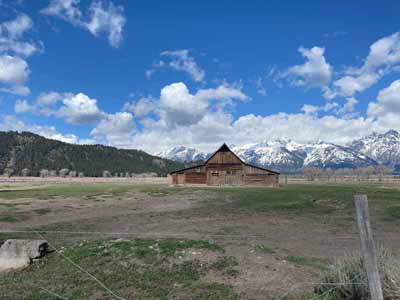
For reference this is a photo taken with an iPhone at 4.5mm (equivalent to 26mm lens)
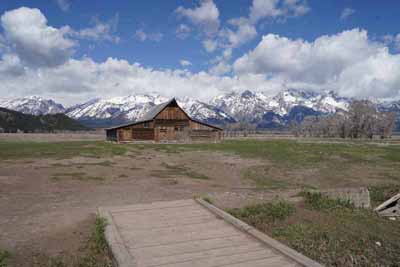
full frame camera with lens set at 27mm
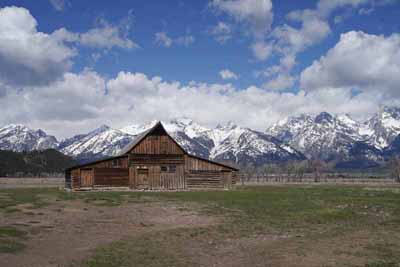
full frame camera with lens set a 37mm

full frame camera with lens set at 53mm
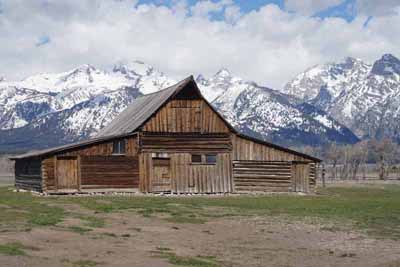
full frame camera with lens set at 66mm
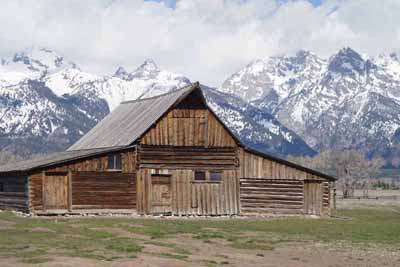
full frame camera with lens set at 83mm
Saved Again
16th October 2015
Why I use filters instead of lens caps
Note: This is a followup to an article written more than a year ago.
In my photography early days, I was a faithful user of lens caps. Whenever I wasn’t shooting, I would snap the lens cap onto the lens. I considered this a safe way to care for my equipment. Of course, most of us also enclosed the entire camera inside its companion leather case. Yes, we were very protective of our precious equipment. And yes again, I spent a lot of time looking for misplaced or buying replacement lens caps.
When I acquired my first SLR at age 14, I quickly fell out of the habit of using lens caps. I may have inherited this trait from my photography mentor for whom I worked while still a student. John explained that removing a lens cap required too much time when you are trying to capture the action.
Again this isn’t the first time that I’ve had a mishap such as this. Actually, this is the third forth time that a filter has saved the front glass element of one of my lenses. This alone tells me that I should keep on buying filters for each of my lenses.
Written by: Arnie Lee
Oops. Saved Again!
26th November 2013
Why I use filters instead of lens caps
In my photography early days, I was a faithful user of lens caps. Whenever I wasn’t shooting, I would snap the lens cap onto the lens. I considered this a safe way to care for my equipment. Of course, most of us also enclosed the entire camera inside its companion leather case. Yes, we were very protective of our precious equipment. And yes again, I spent a lot of time looking for misplaced or buying replacement lens caps.
When I acquired my first SLR at age 14, I quickly fell out of the habit of using lens caps. I may have inherited this trait from my photography mentor for whom I worked while still a student. John explained that removing a lens cap required too much time when you are trying to capture the action.
This isn’t the first time that I’ve had a mishap such as this. Actually, this is the third time that a filter has saved the front glass element of one of my lenses. This alone tells me that I should keep on buying filters for each of my lenses.
Written by: Arnie Lee
